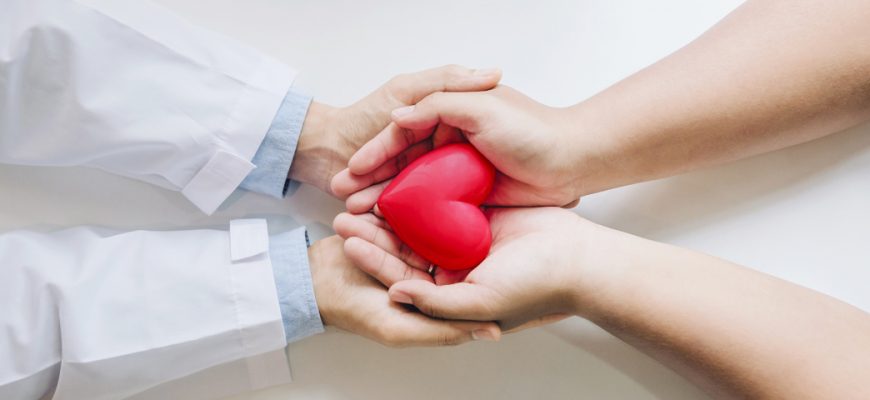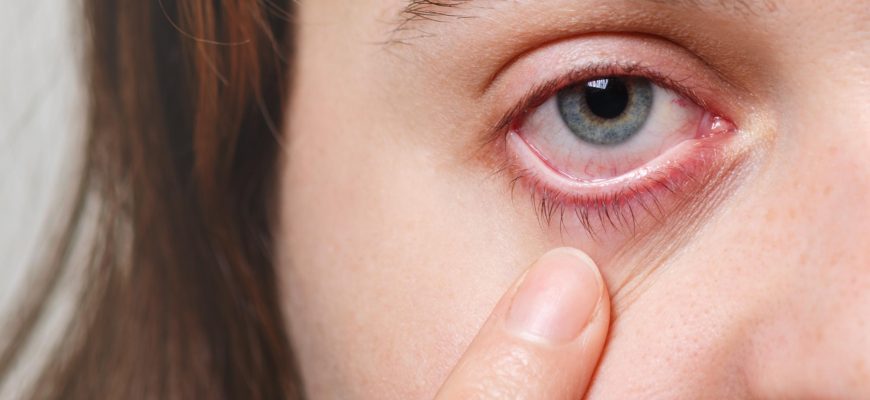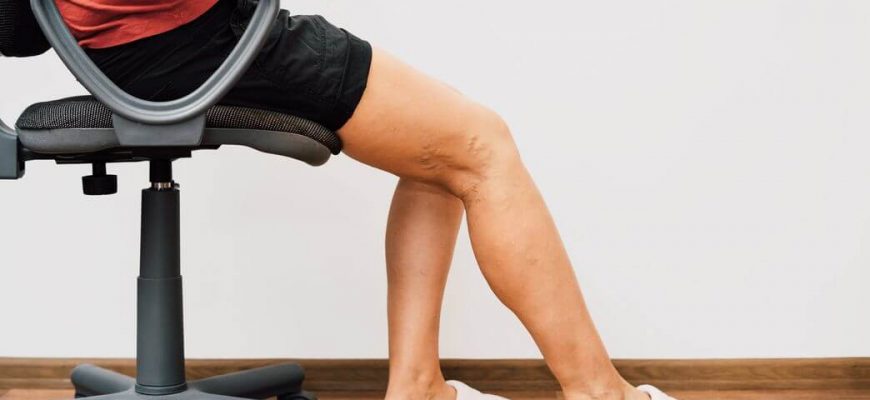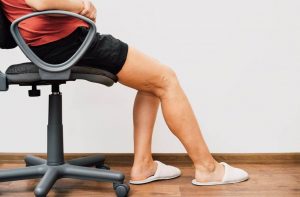Ward off Your Worries Related to the Symptoms of a Heart Attack

Overcome your worries about heart attack symptoms. We are here to help! Recognizing a heart attack isn’t easy. Many fear heart pain, high blood pressure, or a heart attack without knowing it. Thankfully, there are warning signs of oncoming heart attacks to watch for.
To keep you worry-free, we gathered the signs and symptoms of cardiovascular disease. Pay attention to these warning signs, even if you stay active. Read carefully and take notes for future reference.
Pay Attention to Early Warning Signs
Heart attacks are not sudden like movies portray. Many risk factors often go unnoticed. If you experience a heart attack, you’ll likely notice early symptoms of an oncoming heart attack. Pay attention to your body and recognize when something feels off.
The American Heart Association raises awareness of heart attack warning signs. Their mission is to help the public quickly identify a heart attack’s onset and reduce risk.
Early warning signs are common, but everyone’s body reacts differently. Pay close attention to your body and recognize when it doesn’t function properly.
Men and women experience heart attack symptoms differently. Recognizing these differences can save lives. Here are four red flags women should watch for:
Sudden (and Unexplained) Perspiration
Some women may sweat heavily when stressed or nervous. But sudden sweating should raise concern. This may indicate a hot flash or hormonal change. If no other cause exists, it could signal an oncoming heart attack.
Indigestion
Heartburn or indigestion may indicate a heart attack in women. Many women dismiss these symptoms as just stomach issues. But they should monitor heartburn closely along with other symptoms. Nausea and vomiting occur more frequently in women than men.
Upper Body Pain
Many male patients report a heaviness in their chests during heart attacks. They describe it as if an elephant is sitting on them. Women experience sharp pain in their upper body, including the neck, shoulders, and chest. This sensation differs significantly from what men feel. Women should notice where their pain radiates. Their pain may occur in different locations than in men.
Jaw Pain
Jaw pain in women can stem from a variety of reasons such as clenching of the teeth, headaches, or stress. While jaw pain as a warning sign for a heart attack in women is rare, it is a symptom to pay attention to. The nerves in the jaw area react to issues going on in the heart because they are all connected. Keep an eye out for other symptoms to arise if you experience jaw pain.
Men may experience the following symptoms and should look for these red flags:
Chest Pain
Chest pain can signal a heart attack for both men and women. It often presents as steadily increasing discomfort rather than sudden pain. This discomfort can feel sharp, heavy, or tight. Men may describe a heavy feeling in their chest, as if an elephant is sitting on them.
Pain Above the Waist
Pain may radiate in other areas of the body such as the neck, stomach, or an arm. If someone is experiencing this kind of pain as well as chest pains, call for help immediately.
Shortness of Breath
Due to the extreme heaviness of the chest, both men and women may feel shortness of breath. This may also feel like their breaths are labored and have difficulty in doing so.
Treatment and Prevention of Heart Attack
Family history and genetics significantly influence heart attack risk. Conditions like heart murmurs and arrhythmias can increase this risk. Regardless of your risk factors, you can take preventive measures. These steps can help lower your chances of experiencing a heart attack.
Medications Including Corlanor
Doctors will give life-saving medications during a heart attack. They administer these in the ambulance or hospital to help you recover. Other medicines can support heart health after recovery. Corlanor helps slow down heart rates for those in need. Patients with chronic heart failure find Corlanor reduces hospitalization risks during symptoms.
Prevention
Doctors worldwide agree that a healthy lifestyle prevents heart attacks. Many healthy people still experience heart attacks despite exercising and eating well. But a healthy lifestyle generally reduces risk. If you think you are having a heart attack, call emergency services immediately. It’s never too early to seek help.
Stop the Pain Today and Cure Dry Eyes Permanently

You may be suffering from dry eye syndrome—even if you don’t think your eyes are dry! Get to know when you suffer from dry eyes, if you should see a doctor immediately and find out how to cure dry eyes permanently.
Nothing is worse than feeling like your eyes are burning or your eyelids lacking in the moisture department. No matter what you try, your eyes never feel like they’re producing an adequate amount of moisture.
If this is the case, you may be suffering from dry eye disease—an eye disease that causes eye pain and itchy eyes on a regular basis.
When the ocular surface of the eye fails to have the right amount of lubricant and nourishment, a person may experience blurred vision as well as chronic pain that does not subside with the run-of-the-mill eye drops. This is known as dry eye syndrome. Adults typically suffer from dry eyes and result in visiting an eye doctor to seek relief.
Why Do Eyes Need Lubrication?
Most people assume that eyes are naturally moist and do not require any additional assistance to stay moist. Any short-term dry eye symptoms are dismissed. However, with every blink of the eye, tears are evenly distributed on the eye’s surface, and people suffer from few symptoms if any.
The tears are used as a defense mechanism for your eye to keep debris or foreign matter from entering the sensitive area. Tears wash away the unwanted debris and give your eyes a clear and clean surface in which to look out of.
Why Do Dry Eyes Occur And Is There A Permanent Cure For Dry Eyes?
When the eye fails to produce an adequate number of tears and the excess tear drainage system is off balance, the eyes become extremely dry.
Other factors come into play when contributing to dry eye symptoms, or some other eye diseases. Here are a few reasons you may experience dry eye syndrome:
- Certain medications can cause the production of tears to run dry. Antihistamines, decongestants, blood pressure medications, and antidepressants can all negatively impact the production of tears in your eye. If you take any of these medications on a regular basis, speak to your doctor as soon as possible about combating dry eyes before they become a problem.
- Adults experience eye symptoms much more frequently than children or adolescents. This is typically due to hormonal changes in the body, especially in women.
- Women suffer from dry eyes more frequently due to hormonal changes, as well. Pregnancy and menopause are two major culprits that can drastically change a woman’s hormone chemistry. A lack of hormones can negatively impact the production of tears.
- Some medical conditions can cause dry eye symptoms to occur. These ocular surface conditions do not guarantee that you will suffer from dry eyes, but they can increase your chances: arthritis (specifically rheumatoid), diabetes, or thyroid issues.
- Smoking, wind, or dry climates can increase your chances of developing this eye syndrome (for obvious reasons). When certain environmental conditions are in place, the eyes have a difficult time keeping up with tear production. This causes overcompensation of tear production, which throws the production/drainage system to get off balance. The eyes then dry out causing eye pain and itchy eyes.
LASIK is an unlikely culprit when it comes to causes of dry eyes, but it certainly can decrease the production of tears. You may also find that long-term use of contact lenses can increase your chances, too. If you have had LASIK or wear contact lenses, speak to your doctor about dry eyes prevention.
Home Remedies to Cure Dry Eyes Permanently and Naturally
Before making a trip to your eye doctor to discuss your eye pain and itchy eyes, there are a few things you can try at home to see if you can reduce your symptoms on your own. Read on to find out more about how to cure dry eyes permanently:
- Try to remember that blinking regularly is important. Often, this is an involuntary action that our eyes automatically do. However, when certain situations arise (like working at a computer or viewing television for extended periods), our eyes almost forget to blink regularly. This can cause your eyes to dry out and reduce the tear production process.
- Avoid dry areas if at all possible. Environments that are extremely dry can be helped by adding a humidifier in the area. This helps add moisture to the room itself, which allows your eyes to feel less dry and more lubricated.
- Drink plenty of water to ensure that your body is getting the hydration it needs to continue producing tears on a regular basis.
Wear sunglasses when you are outside. Exposure to sun and high winds can dry your eyes out without even realizing it. If you can find sunglasses that wrap around the side of your eyes, those are the best option to keep your eyes protected.
Cure Dry Eyes Permanently Using Tested Medication like Restasis
If none of the home remedy solutions are giving you the full relief you desire, it may be time to see your eye doctor. Eye pain, itchy eyes, and constant eye drop use can be painful and exhausting. There is no reason to live with chronic eye pain, and your eye doctor does have a solution that can help reduce your symptoms drastically. Living a happy and healthy life without eye pain is possible.
One of the most common dry eye permanent cure is Restasis. You have most likely heard of this eye medication in the media as it has been shown to be highly effective and praised by dry eye sufferers as a solution that really does work!
Restasis is a medication that gives dry eye sufferers artificial production of tears to help reduce eye pain and inflammation. Researchers and doctors believe that Restasis works to boost the immune cells in the eye to have less inflammation, which will reduce the painful effects of dry eyes.
These eye drops are not your typical drugstore eye drops and should only be used directed by your doctor.
This is the best permanent cure for dry eyes that your doctor can prescribe. In combination with your at-home remedies, medications such as Restasis can help give your eyes the relief they need! There is no need to suffer from itchy eyes or severe eye pain any longer!
Know Your Type 2 Diabetes Symptoms and Act!

Diagnosis of diabetes mellitus or Type 2 Diabetes can come as a shock, but proper nutrition advice on glucose intake and regular exercise can be a game-changer.
Like with heart disease, adults who have a lifestyle of freedom and choice may be thrown off by a Type 2 Diabetes diagnosis (and for a good reason). When a person receives a diagnosis of Type 2 Diabetes, it is safe to bet that their life will change drastically.
Known by many as adult-onset diabetes, Type 2 is the non-insulin-dependent form of diabetes that affects a person’s ability to naturally control the amount of glucose (sugar) found in the blood.
When a person’s body cannot naturally control the transfer of glucose into energy via the pancreas, the blood becomes highly saturated with glucose. This can cause severe health issues such as nerve damage, heart disease, cardiovascular disease, blurred vision, and other complications of long-term health because the body cannot do its job of getting the insulin it needs for the proper transfer of glucose to energy.
When this occurs, a person with Type 2 Diabetes will find it difficult (if not impossible) to keep their glucose levels under the recommended level of less than 100 mg/dL. Many adults can manage their blood sugar by getting in regular exercise and eating a healthy diet. However, others cannot. When a person’s blood sugar cannot be maintained on its own, other treatment options should be explored.
You may be wondering how to know if you have Type 2 Diabetes and whether a health professional should check you. One interesting fact about Type 2 Diabetes is that a person may have it but not know it for years!
Here are some signs and symptoms that can alert you to a problem:
Unexplained Weight Loss
This is often the first sign for many inflicted with Type 2 Diabetes that alert them to a problem. Even though you may be eating your regular diet and working less than you’d like, you may still experience weight loss. This is due to the fact that your body cannot metabolize glucose which is used as fuel for your body.
Slow-healing sores
If you have sores that are slow to heal or infections that occur on a regular basis, they may be signs of Type 2 Diabetes. Your body’s ability to heal and resist infections is compromised with Type 2 Diabetes.
Increased Thirst
When your body is constantly producing an excess amount of sugar, fluid is pulled from your tissues to give you the proper amount of hydration. This can leave your body feeling thirstier than normal. And, as a result of increased thirst, you will experience an increase in urination.
Fatigue and Irritability
The body needs specific nutrients in order to work properly. Type 2 Diabetes depletes your body of the necessary sugar, which can leave you feeling extra tired and more irritable more than normal.
Impaired Vision
Your vision may have never been an issue before, but with Type 2 Diabetes, blurred/impaired vision may become the norm. When your blood sugar is too high, fluid is pulled from anywhere the body can find it. This means that your eye lenses are susceptible to loss of fluid. When your eyes are not given what they need to function properly, your vision can become blurred.
Increased Hunger for Glucose Products
As your body loses much-needed sugar that is converted to energy, your organs and muscles lose much-needed nutrients. When this occurs, your body will be triggered to require more fuel (food), which can make you feel hungrier than usual. The patient showing signs of diabetes would have cravings for glucose-rich nutrients such as sweets.
Who’s at Risk from Type 2 Diabetes?
Now that you are aware of the symptoms to look for with Type 2 Diabetes, it is important to understand who is most at risk for developing the insulin-resistant disease.
Weight – If you are overweight, you are at a heightened risk of developing Type 2 diabetes. With more fatty tissue, your cells are more likely to resist insulin. The catch here is that you don’t have to be overweight to develop Type 2 Diabetes.
More Fat in Your Abdomen – Where your fat is distributed on your body can play a major role in the increased risk of developing Type 2 Diabetes. Those who have their fat mostly in their abdomen area are more likely to develop this type of diabetes.
Matured Age – Adults 45 and older are at a higher risk of developing Type 2 Diabetes than any other age range of adults. This is most likely due to the lifestyle of an older adult (less exercise, less muscle, etc.).
Genetics – It is not clear that if an immediate family member has Type 2 Diabetes that younger generations will develop it as adults. However, the chances do increase if a parent or sibling has Type 2 Diabetes. This means that early prevention is key to keeping you from developing insulin-resistant diabetes yourself.
Less-than Active Lifestyle – It’s no wonder doctors harp on the fact that being active is hugely important to our well-being. Type 2 Diabetes increases in people who live less-than active lifestyles due to the lack of weight control and lack of movement. When you move your body, your glucose is used as energy, which makes your cells more receptive to insulin rather than resistant.
Treatments
Healthy Eating
There is no specified diet for those who suffer from Type 2 Diabetes. However, certain foods should be incorporated into your diet and other foods that should be avoided.
Foods to incorporate more into your diet:
- Fruits
- Vegetables
- Whole grains
Foods to avoid in your diet:
- Foods with high sugar
- Fewer animal products
- Refined carbohydrates
Regular Exercise
Physical activity has been proven to lower a person’s blood sugar levels, which is exactly what people who live with Type 2 Diabetes aim to do on a daily basis. Aim for 30 minutes of exercise daily to keep your blood sugar levels lower. Be aware that blood sugar medications can cause your glucose levels to drop too low if you add in exercise. Eat a small snack before exercising to ensure that your glucose levels don’t fall too low.
Medications like Janumet, Metformin, and Glimperide
Of course, there are other ways to lower your blood sugar levels if healthy eating and regular exercise aren’t doing the trick on their own. Some common medications include Metformin and Glimepiride. Janumet is used as a combination medication with other medicines like Metformin to help ramp up the reduction of glucose in the bloodstream. People with Type 2 Diabetes use medications such as Janumet when living a healthy lifestyle doesn’t quite do the job that is needed.
Type 2 Diabetes cannot be reversed completely. Those who have Type 2 Diabetes can lessen their symptoms but not completely rid their body of an insulin deficiency. To keep your symptoms at bay, monitor your blood sugar levels as directed by your doctor, and follow a healthy lifestyle regularly.
How to Treat Blood Clot Symptoms in the Legs?

Get assistance with deep vein thrombosis or blood clots in the leg/other areas of the body. Aid is here!
When you hear the words “blood clot,” you may immediately be filled with fear. But, in actuality, a pulmonary embolism or blood clot in a vein serves a greater purpose in the medical field than most realize. In fact, blood clots can be very helpful when it comes to accidental bleeding such as scrapes or cuts with a razor.

If your leg stops bleedings after a razor, a nick or the bleeding on a grazed knee stops soon after a fall from your bicycle, that means that your blood clotting mechanism is working perfectly. Sometimes, however, the blood doesn’t clot the way it should. This can lead to dangerous situations and can sometimes prove fatal if a vein becomes blocked.
What is a Blood Clot
In order to reduce the risk factors and keep you safe from potentially life-threatening health issues in each and every vein such as thrombosis, it is important to understand how and why blood clots can form as well as know the warning signs and how to treat blood clots effectively.
Blood clots can form in different parts of the body. In most cases, they can be found in the circulatory system (your veins). This can actually be quite dangerous as the clots can travel from any part of your body to another quite quickly. If a blood clot reaches a certain part of your body, such as your heart or brain, the results could be fatal, and you should talk to your doctor as a precautionary measure for potential treatment or even surgery to combat any blood-clotting disorders.
If a blood clot does not disperse after forming (to stop you from bleeding profusely), the clot can travel from the origin site to a different location. Some people may have blood clots form in their legs due to a lack of regular movement. Many pregnant women who require a c-section for the birth of their baby may be put on special medication to help reduce the risk of blood clots. Special socks, known as compression socks, are also placed on the legs from the ankles to the knees to keep the blood vessels working as they should. Treating blood clots is vital, and so a visit to the hospital is key to reduce blood pressure and the risk of a heart attack.
Common places that blood clots may form include:
- Legs
- Arms
- Heart
- Lungs
- Brain
- Abdomen
There are symptoms of a blood clot to look for that can keep you from allowing them to develop and block the flow of oxygen through your vessels for too long. Knowing the warning signs and symptoms could save your life!
Blood Clot Symptoms and Warning Signs
Not all blood clots are considered life-threatening as they can be treated quite effectively with modern medicine. Knowing the warning signs and symptoms of a blood clot can help you, and your doctor, determine the best next course of action to take to get rid of blood clots for good.
Abdomen
With blood vessels running throughout your entire body, the abdomen is not safe from blood clots. Your intestines have veins that drain blood to keep you from bleeding internally. Sometimes, however, blood clots can form as a result of conditions such as liver disease or from prolonged use of birth control pills. Here are some symptoms to be on the lookout for when determining whether or not you have a blood clot:
- Constant bloating
- Nausea
- Vomiting
- Diarrhea and/or bloody stools
- Severe pain in your abdomen
Arms & Legs
A deep vein thrombosis (also known as a DVT) can occur in your arms or legs when movement is restricted for more extended periods. For example, if you spend most of your day sitting or lying down, you are at an increased risk of forming DVT than those who move freely throughout the day. Any blood clot in leg or arm veins can not only injure those extremities, but could have a detrimental impact to the rest of the body.
Some symptoms you may experience with DVT including:
- Swelling of the clotted area or the entire leg
- Cramps in the lower leg
- Pain in the clotted area (may be severe or dull)
- Blue or red color of the clotted area (due to lack of oxygen flow through the body region)
Brain
Everyone knows that the brain is a vital part of the functioning body. If anything goes wrong with the brain, the entire body will most likely shut down. Blood clots can do serious damage to the brain if not detected quickly enough. Sometimes, blood clot is formed due to recent head trauma or from the fatty deposits on the vessel walls inside the brain. Either way, a blood clot can cause a stroke and further damage if not treated. These symptoms could alert you sooner to a blood clot in your brain:
- Blurred vision or impaired vision (typically sudden and not expected)
- Seizures
- Serious fatigue
Heart
A blood clot in your heart vessels can be extremely dangerous. Blood clots in the vessels of your heart can cause a heart attack. Luckily, there are ways to treat the blood clots to prevent them from causing further damage. If you notice any of these symptoms, alert your emergency medical professionals immediately and seek help.
- Severe chest or arm pain
- Difficulty breathing or catching your breath
- Sudden and/or profuse perspiration
Lungs
Pulmonary embolisms are blood clots that form in your lungs. When this happens, oxygen is cut off from getting to your lungs, which can be fatal. These clots typically start off as DVT in the legs and break off, before traveling to other locations. This is why early detection of DVT is key to staying out of the danger zone. If you notice any of the following symptoms, seek medical help immediately:
- Difficulty catching your breath or struggling to breathe deeply
- Dizziness
- Lightheadedness
- Coughs
- Sudden onset of perspiration
- Pain in your chest
Treatment and Prevention with Eliquis and Exercise
Blood clots can be treated if you develop one. Contrary to some beliefs, blood clots do not always equal fatal consequences. If you pay attention to your body and what it is trying to tell you, you can easily pick up on warning signs and symptoms well before the blood clot becomes a serious situation. The best solution would be to increase your movement and administer some medication to stop further clots from staying in your system. Medicine like Eliquis and light to medium exercise can improve and prolong your wellbeing significantly.
- Move Around
The easiest way to help prevent blood clots from forming is to keep your body moving. There is nothing worse for increasing your chances of developing a blood clot than to stay in one position for extended periods. Your job may not require a great deal of movement throughout the day, but get up and move around anyway. Go for a walk around the office, take the stairs instead of the elevator, or park further from the door in the mornings. Whatever it takes to keep your legs and arms moving regularly is what your body needs to reduce the risk of potential blood clots.
- Medications
Modern medicine helps prevent blood clots from forming as well as treat blood clots that have already formed. While medication cannot break up existing blood clots, it can help keep them from increasing in mass. Some doctors may also prescribe blood thinners as a way to prevent the clots from forming altogether. One highly recommended medication is Eliquis. This blood thinner is used to treat DVT and pulmonary embolisms as well as reduce the risk of developing them again in the future.
- Keep Clothing Loose
Tight-fitting clothes can restrict blood flow. This is obviously not a good idea when trying to avoid blood clots. Therefore, keep your clothes loose and allow your blood to move freely at all times.
Tags: Blood clot, Blood clot symptoms, Blood clot in leg, Deep vein thrombosis

